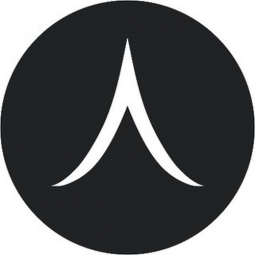Region
- America
Country
- United States
Product
- Turvo platform
- Turvo Connect
- Turvo Pay
- Turvo Analytics
Tech Stack
- Custom APIs
Implementation Scale
- Enterprise-wide Deployment
Impact Metrics
- Cost Savings
- Productivity Improvements
- Revenue Growth
Technology Category
- Platform as a Service (PaaS) - Connectivity Platforms
- Platform as a Service (PaaS) - Data Management Platforms
Applicable Functions
- Logistics & Transportation
Use Cases
- Supply Chain Visibility
- Remote Asset Management
Services
- System Integration
About The Customer
Port X Logistics is a company that was in need of a comprehensive solution to unify its logistics management strategy. The company was seeking a way to bring together people and systems to provide complete visibility and real-time data access to NVOCCs. They wanted to enhance their communication and document management with steamship lines and offer compliance and visibility measures to BCOs and their freight forwarder partners. The company was looking for a solution that would allow them to achieve a differentiated digital experience with potential clients.
The Challenge
Port X Logistics was facing a challenge in bringing together people and systems to provide complete visibility and real-time data access to NVOCCs. They were seeking a solution that would enable proactive communication and efficient document management with steamship lines. Additionally, they wanted to offer compliance and visibility measures to BCOs and their freight forwarder partners.
The Solution
Port X Logistics decided to partner with Turvo to unify its logistics management strategy. This partnership aimed to create a culture of excellence amid tech-driven insights and complete visibility into its operations. Turvo’s comprehensive supply chain approach allowed Port X to achieve a differentiated digital experience with potential clients. Users were assured of accurate data, with documents and photos only a click away. The company used the Turvo platform, combining its collaborative infrastructure, visibility, productivity tools, shipment management, Turvo Connect - with custom APIs, Turvo Pay, and Turvo Analytics.
Operational Impact
Quantitative Benefit

Case Study missing?
Start adding your own!
Register with your work email and create a new case study profile for your business.
Related Case Studies.
.png)
Case Study
Improving Vending Machine Profitability with the Internet of Things (IoT)
The vending industry is undergoing a sea change, taking advantage of new technologies to go beyond just delivering snacks to creating a new retail location. Intelligent vending machines can be found in many public locations as well as company facilities, selling different types of goods and services, including even computer accessories, gold bars, tickets, and office supplies. With increasing sophistication, they may also provide time- and location-based data pertaining to sales, inventory, and customer preferences. But at the end of the day, vending machine operators know greater profitability is driven by higher sales and lower operating costs.

Case Study
Remote Temperature Monitoring of Perishable Goods Saves Money
RMONI was facing temperature monitoring challenges in a cold chain business. A cold chain must be established and maintained to ensure goods have been properly refrigerated during every step of the process, making temperature monitoring a critical business function. Manual registration practice can be very costly, labor intensive and prone to mistakes.

Case Study
Remote Wellhead Monitoring
Each wellhead was equipped with various sensors and meters that needed to be monitored and controlled from a central HMI, often miles away from the assets in the field. Redundant solar and wind generators were installed at each wellhead to support the electrical needs of the pumpstations, temperature meters, cameras, and cellular modules. In addition to asset management and remote control capabilities, data logging for remote surveillance and alarm notifications was a key demand from the customer. Terra Ferma’s solution needed to be power efficient, reliable, and capable of supporting high-bandwidth data-feeds. They needed a multi-link cellular connection to a central server that sustained reliable and redundant monitoring and control of flow meters, temperature sensors, power supply, and event-logging; including video and image files. This open-standard network needed to interface with the existing SCADA and proprietary network management software.

Case Study
Marine and Industrial Displays by Caterpillar
Caterpillar needed a flexible platform for a new generation of connected human-machine interfaces across a wide variety of industrial environments. Examples include marine, petroleum pumping, generators, custom hydraulics, mining, and rail applications.





